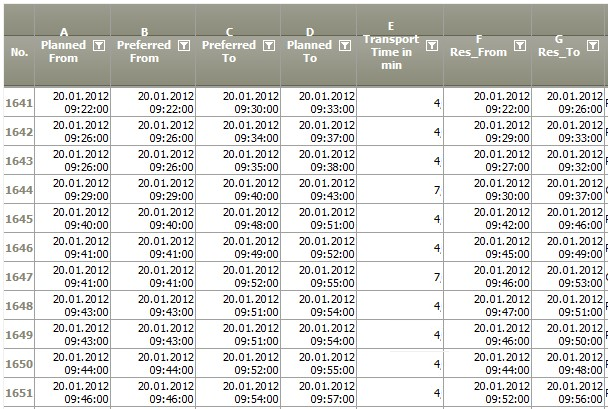Optimizer: Sequence Simple
Summary
Optimizer: Sequence Simple
Getting Started | This operator allows to find an ideal time interval for a task or shift in a given possible and a given preferred time interval. This could help to find the optimal time interval for breaks or service tasks which are not too time critical.
| ||||||||||||||||||||||||||||||||
Input data | This is the data containing the task information. This data is provided by the parent data node or by the data node itself.
| ||||||||||||||||||||||||||||||||
Parameter with Shift Information | The first five settings are linked to another data node, which contains information about shift types, such as identifier and shift length (from/to).
| ||||||||||||||||||||||||||||||||
Other Parameters | The other parameters contain:
| ||||||||||||||||||||||||||||||||
Example | In this example from a hospital, patients should be transported from a place to another one. The times are normally given by the beginning or the end of a treatment, but have some flexibility at the end. So the optimizer calculated the ideal time period for these transports. | ||||||||||||||||||||||||||||||||
Attention | Pleases be aware that the Optimizer can only deal with a minimum interval of one minute. |
Example: ...
Situation | ... |
|---|---|
Settings | ... |
Result | ... |
Project-File | ... |
Want to learn more?
Settings
Optimizer: Sequence Simple
Columns of input table
Parameter
Examples
Example 1: ...
...
Calculation method | Settings | Result |
|---|---|---|
... |
|
|
Troubleshooting
Problem | Frequent Cause | Solutions |
|---|---|---|
... |
| ... |
Related topics
- ...

